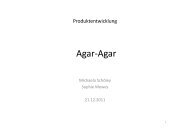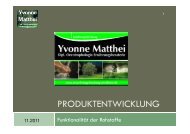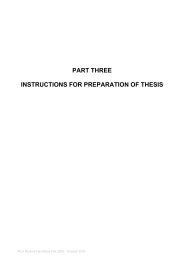European Landscape Architecture Practice 2000
European Landscape Architecture Practice 2000
European Landscape Architecture Practice 2000
Create successful ePaper yourself
Turn your PDF publications into a flip-book with our unique Google optimized e-Paper software.
abstract<br />
making or remaking NL<br />
This lecture is not about blasphemy, it is rather about strategies of stirring<br />
processes.<br />
As you know, the Dutch reclaimed a lot of land from the sea and they drained<br />
and occupied former wetlands. So there goes the saying that God created the<br />
world and the Dutch created Holland. The Dutch did not need the Creator to<br />
make their space to live, they just had to fight against the natural powers for it.<br />
So to speak, these powers could rather be seen as a kind of test, God put the<br />
Dutch through.<br />
Nowadays more diverse forces have to be controlled, monitored and planned.<br />
Next to the classical issue of taming water and nature, a strong market economy<br />
and a highly differenciating society need to be governed as well.<br />
Different strategies got involved to get a grip on these powers ‘society’, ‘market’<br />
and ‘nature’ throughout the last 50 years. These strategies were always a mirror<br />
of the prevailing mentalities and hence have changed to a great extent with the<br />
transition of the former agrarian to information society.<br />
The shifts in thinking are based on growth of individual emancipation and<br />
liberalisation and manifest in spatial strategies. So the changes are about<br />
expanding boundaries in thought and in space. This lecture deals with three<br />
strategies and the way ‘the one’ and ‘the other’, means: the issue to be controlled,<br />
relate to each other. The three following diagrams illustrate the shifting boundaries<br />
related to the strategies.<br />
The first strategy is separation.<br />
Separation can especially be seen in in space and society.<br />
As per the latter in the Netherlands a strong coherence existed in religious<br />
communities, which differed strongly from each other and hardly mixed. They all<br />
had their own churches, schools and media- that was called the’columnization’<br />
of society –a perfectly separated society!<br />
18


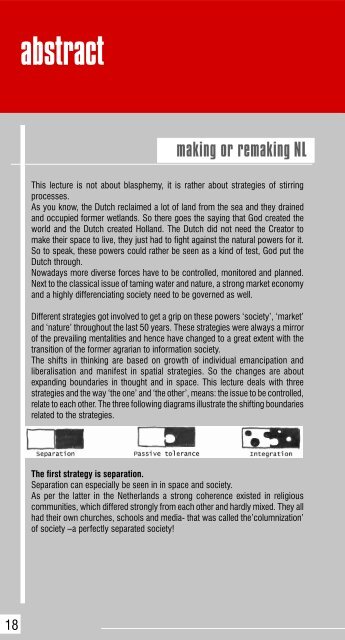

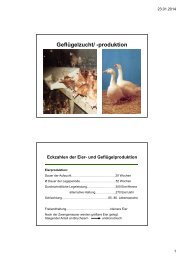
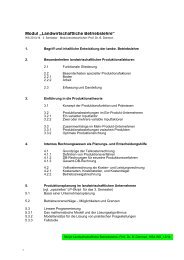
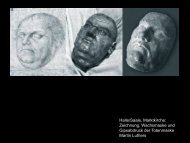
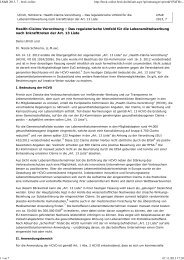
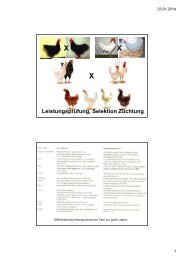
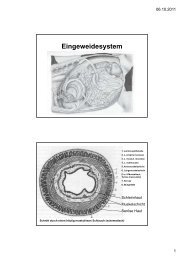
![VL Produktentwicklung Bsp. Hydrokolloide [Kompatibilitätsmodus]](https://img.yumpu.com/23911080/1/184x260/vl-produktentwicklung-bsp-hydrokolloide-kompatibilitatsmodus.jpg?quality=85)
